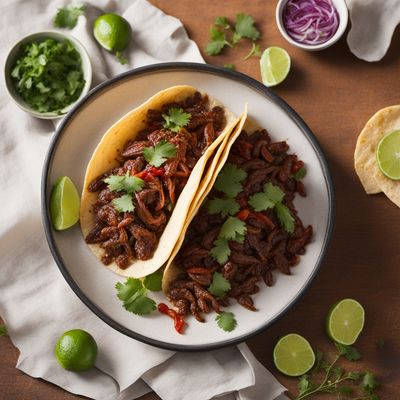
Ingredient
Edible insect eggs
Nature's Protein Powerhouse
Edible insect eggs, such as ant eggs, silkworm pupae, or cricket eggs, are a highly nutritious and sustainable source of protein. They have been consumed by various cultures around the world for centuries and are gaining popularity as a sustainable food option.
Origins and history
Edible insect eggs have a long history of consumption, particularly in regions where insects are considered a traditional food source. They are rich in protein, vitamins, and minerals, making them an excellent alternative to conventional protein sources. In many cultures, they are considered a delicacy and are used in traditional dishes.
Nutritional information
Edible insect eggs are a highly nutritious food source, packed with protein, healthy fats, vitamins, and minerals. They are also low in carbohydrates and can be a suitable option for individuals following low-carb or ketogenic diets. Additionally, they are a sustainable protein source with a low environmental impact.
Allergens
Some individuals may have allergies to specific types of insects, so it is important to be cautious when consuming edible insect eggs. If you have known allergies to insects, it is best to avoid consuming them.
How to select
When selecting edible insect eggs, ensure that they are sourced from reputable suppliers who follow proper hygiene and safety standards. Look for eggs that are fresh, clean, and free from any signs of spoilage or contamination. If possible, choose organic or sustainably sourced options.
Storage recommendations
To maintain the freshness and quality of edible insect eggs, store them in a cool and dry place, away from direct sunlight. If the eggs are in their natural form, they can be stored in airtight containers or refrigerated to extend their shelf life. Follow the storage instructions provided by the supplier for specific types of edible insect eggs.
How to produce
Producing edible insect eggs at home requires specialized knowledge and equipment. It is recommended to leave the production to professional insect farmers who have the necessary expertise and facilities to ensure safety and quality.
Preparation tips
Edible insect eggs can be prepared in various ways depending on personal preference and cultural traditions. They can be boiled, fried, baked, or added to soups, stews, or stir-fries. They can also be ground into a powder and used as an ingredient in protein bars, energy balls, or baked goods.
Culinary uses
Edible insect eggs are commonly used in traditional dishes in many cultures. They can be added to soups, stews, or stir-fries to enhance the flavor and nutritional content. They can also be used as a protein-rich topping for salads or incorporated into omelets or quiches.
Availability
Edible insect eggs are available in regions where insects are consumed as a traditional food source. They can also be found in specialty stores or online retailers that cater to the growing demand for alternative protein sources.
More ingredients from this category
Recipes using Edible insect eggs

Zesty Ants on a Stick
Nepalese-inspired Zesty Ants on a Stick: A Tangy Delight

Grasshopper Tacos
Crunchy Delight: Grasshopper Tacos with a Mexican Twist

Ainu-inspired Ahuatle Pancakes
Savory Delights from Ainu Cuisine: Ahuatle Pancakes with a Twist

Hormiga Culona Tacos
Savory Crunch: Hormiga Culona Tacos with a Twist

Indonesian Chinese Style Fruit Martorana
Sweet and Colorful Fruit Delights: Indonesian Chinese Style Fruit Martorana

Tunisian-inspired Spiced Ants
Savory Tunisian Ant Delight

Molecular Choto al Ajillo
Sizzling Garlic Delight: A Molecular Twist on Choto al Ajillo

Canadian-style Cricket Tacos
Maple-Glazed Cricket Tacos: A Canadian Twist on a Mexican Delicacy

Chinese Islamic Croquembouche
Golden Tower of Delights: Chinese Islamic Croquembouche
